FIFA, Brand Strategy and the March of Inevitability
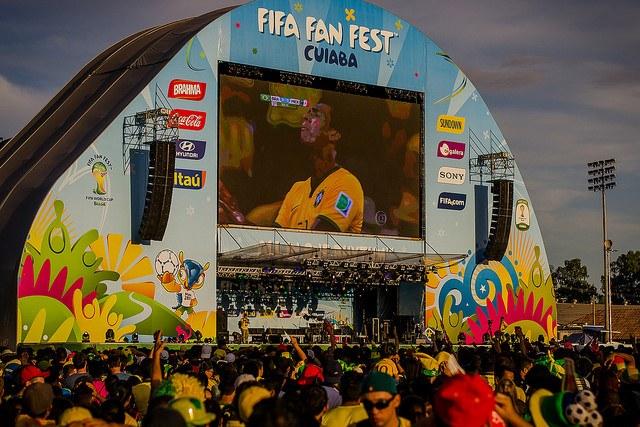

Last week, I was contacted by a leading national newspaper and asked my opinion on FIFA. Or rather, how FIFA being shoved in front of a grand jury would impact global sponsors like Coke.
My thoughts were, in essence: Don’t dump old friends just because they’ve done something bad. At the same time, give them the tough love that will get them back on the road to being decent global citizens. In this case, that would mean Coke telling FIFA to clean up the corruption, send the crooked leaders packing, and engage an objective third party to ensure future proceedings are above board.
You may argue my thinking was hopelessly naïve. After all, one of the reasons FIFA ventures into places like Africa and Russia is because the sponsors want to extend their market reach. Having discussed the issue with a number of sports marketing specialists since giving my interview, I feel fairly confident saying the sponsors knew exactly what was going on with Sepp & Co.
What all this means, of course, is that things are going to get very interesting in the FIFA-dom. I see layer upon layer of rotten behavior being exposed, the dragnet extending not just to the top of FIFA, but outward to enmesh sponsors as well. As the movie says, there will be blood.
This, my friends, is what they call a global teachable moment.
Let’s charge into the breach
In the world of sustainable business, getting a company to clean up its unethical, unsustainable practices is as old as Moses. It simply isn’t newsworthy anymore.
This is a good thing. As leaders like Nike, Unilever and Walmart have demonstrated, a company can do very, very well while still behaving like a responsible global citizen.
Now would be the time for these companies (and all us small folk who in some way helped them along) to step forward and show the world how a good organization behaves.
Not only would it offer soccer fans around the world ammunition in the face of the ‘don’t upset the applecart’ tactics FIFA will surely employ to hang on to the status quo, but it would also provide some incredible visibility to the global movement for sustainable business.
FIFA has the headlines now. I have no doubt FIFA will continue to make the headlines as its cartoon dictatorship keeps rattling sabres from the burning ramparts. Jeez people, it’s like they’re giving us a slow pitch right over the plate. If we can’t use this opportunity to show the world that a better, more ethical and sustainable way of doing business is possible and desirable, we have only ourselves to blame.
Help FIFA out: Share your brand strategy
Here’s what I suggest:
Keep studying the headlines. When you see a FIFA story where you can offer tips on sustainable brand strategy that might help, by all means suggest it. Ditto for all you NGOs that might be able to help FIFA monitor its behavior. Ditto for supply chain specialists and global strategists of all stripes.
Add your thoughts to the comments section of the newspaper. Map out the steps you took to build a more sustainable business in blog posts. Get some radio talk-show time. I can vouch for the media’s voracious appetite on this subject – why shouldn’t folks fighting the good fight be in the spotlight?
Let me know how it goes
I love studying how brands futureproof themselves. I wrote a book on it. I speak on the subject from coast to coast. Heck, I even have a methodology for helping companies build brands resilient enough to thrive in our turbulent times.
I’m dying to know how this one shakes out. I have my thoughts, but I’ll keep them to myself. What I want is to hear from you. What advice would you offer to FIFA? Have you contacted the media with your thoughts? How were you received?
My fairly transparent motive is to start a movement that uses the FIFA scandal to catapult responsible corporate brand strategy into the spotlight.
And when the next FIFA-esque scandal erupts, to do it all over again.
We’ve been through this trial by fire. We’ve built better companies because of it. It’s time to let the world know.
Contact me at on Twitter at @MarcStoiber to share your thoughts.
Image credit: Flickr/Paulisson Miura
Reverse Innovation Can Help Millions of Mothers Save Their Newborns

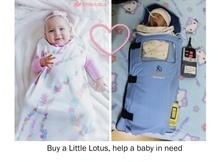
Editor's Note: This post originally appeared on Unreasonable.is.
By Nate Beard
The hour-long car ride from rural Bhaktakheda, India, to the community health clinic in Uttar Pradesh was turmoil for Kiran Devi. Upon arrival, her infant was stabilized, but still suffered an all too common risk — hypothermia.
Luckily, the staff at the local hospital was prepared thanks to a life-saving product made possible by Embrace Innovations. The company is taking to market a technology as effective as an infant incubator at less than two percent of the typical incubator.
This story of a struggling hypothermic baby in developing markets is unfortunately not uncommon. “This is the reality faced by 15 million babies every year, the world over,” says co-founder and president, Rahul Panicker. “And 3 million die during the first month of life.” The global problem is recognized by World Health Organization’s Millennium Development Goals (MDGs) where 17 percent of all underweight children under 5 die.
“Normal room temperature to these babies feels like ice-cold water,” explains Panicker. To solve this, the Embrace Warmer — looking like a tiny a sleeping bag — includes proprietary technology inserted into the bottom of the warmer that stabilizes the temperature of the infant. This technology is just as effective as a regular incubator, but where a typical incubator costs $20,000, Embrace’s comes in at a cost of roughly $300.
The company has reached 150,000 infants so far, but in order to reach millions of infants around the world, the Embrace team needed to find a faster way to scale. Unexpectedly, they found that model in the U.S. “After four years of living in India, I returned to San Francisco where all my friends seemed to be having babies," says Jane Chen, CEO and co-founder of Embrace Innovations. "Hanging out with them, I noticed they were constantly worried about their babies’ temperature.” The deep passion and understanding Chen had developed for neonatal care, coupled with the proprietary technology the Embrace team had developed for those in poverty, led Chen and a team of designers to create the Little Lotus product line.
This new product line — consisting of a swaddle, sleeping bag and blanket with NASA-inspired technology — keeps babies at the perfect temperature, but it is also a Toms-inspired, one-for-one business model that delivers Embrace Warmers to mothers and health clinics unable to afford them. In other words, if you purchase a Little Lotus, that will ensure more children, like Devi’s, will have access to the Embrace Warmer.
“I hope we are able to help millions of lives through the Embrace warmers and Little Lotus,” says Chen looking forward, “and that we continue to innovate on products that help address infant and maternal mortality.”
Image courtesy of Embrace Innovations
Nate Beard is the producer and editor of content for Unreasonable.is and is dedicated to empowering those around him with information and resources.
Waste Heat (Not Sweaty Bodies) Powering U.S. Sports Stadiums


Editor’s Note: This post is part of a student blogging series on The Business Of Sports & Sustainability. Students attend the Presidio Graduate School which offers the only MBA-level sustainability program focused exclusively on the sports industry. You can follow the series here.
By Allyn McAuley
Many sports leagues are looking for efficiency gains -- beyond faster routes and better passes.
In the sports industry alone, 68 of the 126 teams in the five major professional sports leagues (MLB, NFL, NBA, NHL and MLS) have invested in energy efficiency, and at least 146 collegiate sports departments have energy efficiency programs in place -- leading to massive energy and financial savings.
For example, the Portland Trail Blazers’ LEED Gold Moda Center features 100 percent renewable energy resulting in annual energy savings of 2.5 million kilowatt-hours and $2.1 million since 2008. These initiatives have enormous impact and have paved the way toward environmental stewardship, and now many sports facilities across the country are going beyond equipment upgrades to develop innovative, whole-system approaches to reducing their carbon footprints.
One of the most exciting energy efficiency initiatives is the capture of waste heat to be used as energy. The University of Colorado, Boulder, home to the Buffaloes, is striving for LEED Platinum certification for its new recreation center, which boasts a closed-loop heating system that utilizes waste heat from the ice rink to heat the swimming pool. Target Field, home of Major League Baseball’s Minnesota Twins, utilizes steam from neighboring Hennepin Energy Resource Center (HERC), Covanta’s waste-to-energy facility that transforms solid waste into electricity.
The University of Colorado, Boulder
The University of Colorado, Boulder is aiming for a near net-zero rec center, which features heat recovery on all ventilation units, a multi-level switching lighting system, and waste-heat capture from ice rink refrigeration systems.
Typically, cooling towers are used to funnel waste-heat from HVAC systems into the atmosphere, squandering a valuable resource. Instead of a cooling tower, the rec center uses the outdoor swimming pool to keep this energy in the system. Waste-heat from the ice rink chillers is used to heat the swimming pool, hot water tanks and air flowing through the building.
These technologies create a closed-loop heating system that is able to filter hot and cold air to where it is needed. The University of Colorado, Boulder’s system is projected to result in a 70 percent reduction in energy use and $300,000 of savings per year.
Target Field
The Minnesota Twins have developed an industrial symbiosis with HERC that employs materials commonly considered waste as fuel inputs for productive processes.
Target Field provides the waste-to-energy facility with municipal solid waste (MSW) for fuel, and HERC in return provides heat to Target Field by generating steam from the incineration of the solid waste via NRG Energy Center’s downtown heating system.
Burning MSW can create air pollution, so it is imperative to keep recyclable and non-combustible materials out of the furnace. HERC is regulated by the EPA’s Maximum Available Control Technology (MACT) standards, which require emissions-control systems that achieve the maximum reduction of dioxins and other harmful gases deemed possible by the EPA from escaping into the atmosphere during incineration. The Twins prevented 5,419 tons of waste from reaching landfills between 2011 and 2014. The Twins' first choice is to recycle or compost, which they were able to do with 3,327 tons of waste generated. The remaining 2,092 tons that could not be easily recycled were sent to HERC to make energy. HERC burns 365,000 tons of garbage per year, about 35 percent of the total waste generated by Hennepin County facilities, to produce energy that powers 25,000 homes.
What can we learn?
The University of Colorado, Boulder, and the Minnesota Twins are two organizations that are thinking outside the box to deepen their energy savings.
What innovative approaches to energy efficiency have you heard about that go beyond the low-hanging fruit of lighting, insulation, and equipment upgrades? What can sports organizations do to reduce their environmental footprints and promote stewardship?
Tell us about it on Twitter at @TriplePundit and @PresidioSports
Image credit: 1) Flickr/Paulisson Miura 2) University of Colorado, Boulder
Allyn McAuley is a 2015 MBA candidate at Presidio Graduate School in San Francisco, California, USA. Allyn's focus area is the development of software solutions to help those who are solving the world's most pressing environmental and social problems.
BITC award shortlisters putting responsibility at heart of business


A broad range of organisations, from well-known high street names to independent traders have been recognised as finalists across the 14 award categories of the 2015 Responsible Business Awards, run by the charity Business in the Community (BITC), the Prince’s Responsible Business Network.
The 63 companies that have reached the final stage are playing their part to create a fairer society, commented Stephen Howard, ceo, BITC. “The Responsible Business Awards give much needed visibility to organisations who are putting responsible behaviour at the heart of how they do business.
“Finalists are each playing their part to create a fairer society and more sustainable future by bringing to life the practical role that businesses can take to address some of our most pressing issues. We congratulate all the finalists for being inspirational examples for others to learn from.”
The 2015 Finalists include Electricity North West a finalist in the engaging customers on sustainability category for its public engagement programme to encourage customers to use power in the home more efficiently, helping families save money and making the company’s infrastructure upgrades more sustainable.
Also named finalist is British Airways for its work to get critical relief and specialists into areas affected by international disasters. Sky is a finalist in the Sustainable Products and Services Category for radically improving the design of its products to make them more energy efficient and reduce its use of natural resources and Manchester Airport whose Airport Academy programme supports young people aged 16-19 into employment is a finalist in the Freshfields Work Inclusion category.
Winners will be announced in London at the BITC’s Annual Responsible Business Gala Dinner on 7 July 2015.
Picture credit: © Microworks | Dreamstime.com
Gal's (and Guy's) Guide to Networking
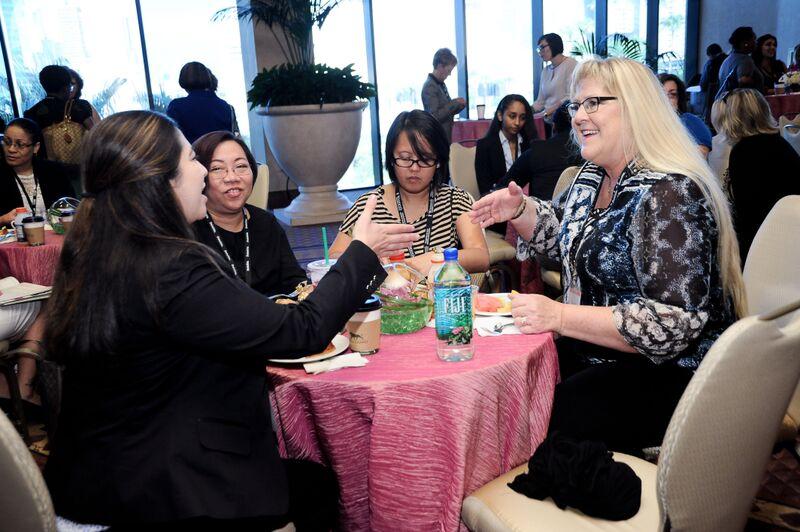

"Get out there and network" is a classic recommendation lobbed at folks who are looking for career advancement. But the ins and outs of actually going to a strange event and talking to strangers for personal gain can feel awkward at best. Here are some tried and true tips that always work for me. Never fear, it gets easier with practice!
Networking (aka talking to people)
First of all, it's always helpful to remember that you're just going to be talking, to people. You don't even need to talk about work unless you want to.
I find that networking is easier the less I focus on my ultimate goals. It's normal to feel nervous about asking strangers for something like job opportunities or trying to find new clients, because those two cases mean *asking* for something, which can be quite difficult. Instead, think about what you can offer people. Even if it's just a few minutes of pleasant conversation, you'll be remembered fondly. Down the road you can make your ask if it's appropriate.
Modest goals
If talking to strangers in and of itself makes you nervous, set a small goal for yourself (i.e., talk to one or two strangers; you are allowed to start small).
However -- don't make your modest goal about giving out cards or receiving cards. The mark of a nervous networker is the person who walks up to you, blurts out a sentence about their company and pushes a card into your hand. Instead I recommend focusing on having a pleasant and natural conversation. If we actually have a legitimate reason to exchange cards, I'll offer one, but a stack of cards does not necessarily mean you had a successful networking experience.
Find an appropriate place to network
Most successful networking happens at conferences and industry events, but it can even happen in the office cafeteria. In my line of work, sustainability, it often happens at social gatherings, because many people have a personal interest in sustainability, so it's easy for TriplePundit to come up. Just don't force it.
Approach a stranger
Now, here's my big secret. At any networking event, there are probably bigwigs that everyone is trying to talk to (think of the speakers at a conference or the boss at a corporate event.) Stay far away from that pack! Even if you can make it to the front of the line, you'll only have a minute or two to make a connection, and everyone will be watching -- way too much pressure. If you truly want to make a connection with these folks, reach out on Twitter or LinkedIn after the event. The fact that you were at the same event but didn't have a chance to talk is your in!
Instead, look around the room. Is there anyone standing by themselves looking at their phone, or sitting at a table looking at a brochure? That is your person. This person doesn't know anyone either. By approaching him or her, you are easing someone else's anxiety, and they'll be grateful right off the bat. Chat them up, and you have a new conference buddy!
What to talk about
Once you approach someone, you need an opener. A failsafe is "what brought you here?" Everyone has some reason for standing in that room.
Then you need to keep the conversation flowing. The key is to ask some questions. Everyone likes to talk about themselves, so the classics like "Where do you work?" "Where are you from?" and "Any exciting plans for the weekend?" are failsafes.
Instead of focusing on what you can get out of talking to this person, think about how you can help them -- first and foremost put them at ease in a nerve-wracking situation, introduce them to someone they should know, or share the name of a book they might enjoy reading or news tidbit from your field.
Advanced maneuver -- approaching a group
Even the most seasoned networker can feel nervous approaching a group. What if they are all friends and they are talking about someone who just died?
Body language is key here. Look for people who are not standing too close together, and look for signs that they are in business mode -- standing up straight, square shoulders and generally "professional." These people probably don't know each other too well, which is what you want. When you approach the group, it's quite possible that they're reaching the end of their own awkward get-to-know-you conversation, in which case they'll be happy for some new blood. Listen in to see what they are talking about, wait for a break in the conversation and add your own opinions.
Don't be offended if one of them takes the opportunity to wander off. He or she was probably looking for an exit already and your arrival provides the perfect excuse. If you are left with one person, proceed with the conversation suggestions above.
Making an exit
When you have almost exhausted everything you can think of to naturally discuss with your conversation-mate, that's the perfect time to make an exit. If you wait for an awkward pause, it will be too late, because it's obvious you're leaving because you've run out of things to discuss, which can feel rude. With that said, everyone is at a networking event to meet people, so don't worry if your ending is a bit abrupt or awkward; it's part of the game. Here are some good catch-phrases to keep on hand for your natural exit:
It was great talking to you! ...
- But I see a co-worker/friend/someone-I need-to-catch over there
- I'm going to go grab a drink/I'm starving and I need to grab a bite
- I have to make a phone call
- I need to call my kids/husband/wife before bed
- I've got to catch up on my email
Then, it's just a handshake/business card exchange, and you are out the door!
Follow-up
I'm a big fan of LinkedIn for follow-ups. When you connect, it gives you a chance to ask a follow-up question or continue the conversation. You can usually find folks whether or not you got their email, as long as you remember part of their name and company. Connecting on LinkedIn also means you'll be able to find this person in two years when you might need them, more easily than you can find their card. And you can also keep track of them when they switch jobs.
Bonus: Networking in the digital age
LinkedIn works for me but it's not for everyone. Check to see if your target has more than 500 followers. If they do, it is fair game to cold-connect to them. If they do not look super active on LinkedIn, see if they are active on Twitter, or search for their email address.
When you reach out, make sure that you have a specific ask in mind. If someone wants career or blogging advice from me, I'm happy to try to help! It is more difficult if they have a general request because these are more ambiguous and it can be tough to figure out how I can help.
With networking online, the rules of in-person networking are out the window. Don't be afraid to ask for something specific.
What about you? Share your networking tips on Twitter with me @jenboynton and @WLCLV, The Women's Leadership Conference Las Vegas -- who made this post possible. Looking forward to continuing the conversation online and at the conference in July!
Image credit: MGM Resorts Foundation
Norway's Huge Coal Divestment: From Climate Hero to Greenwash and Back Again
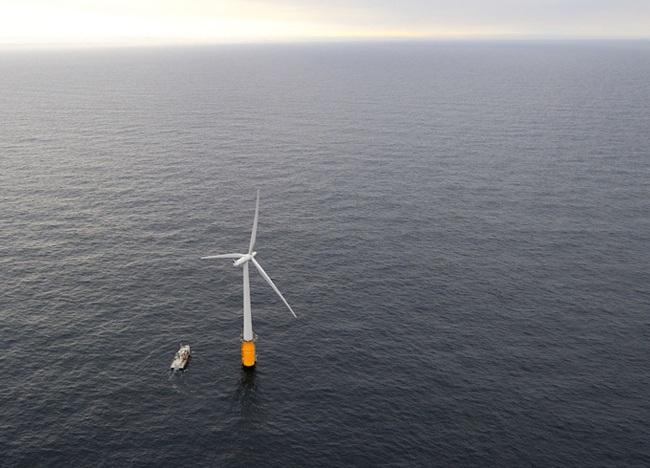

The Intertubes have been buzzing over last week's news that the global coal industry has lost a $900 billion investor, namely the Norwegian Government Pension Fund. However, Norway's path to coal divestment is much more complicated than recent news makes out, and there are some lessons here for investment funds and other companies seeking to build a green brand.
The story actually started earlier this year, when the pension fund -- which happens to be the world's largest sovereign wealth fund -- splashily announced an ambitious coal divestment plan. In the latest development, Norway will introduce a follow-up plan to close an apparent loophole in its original plan.
Coal divestment 1.0
For those of you new to the topic, Norway's pension fund is not a conventional pension fund. Its financial support comes from Norway's petroleum revenues, hence its nickname, "the Oil Fund."
The Oil Fund was set up in 1990. Its initial focus was in government bonds, but it soon diversified into other markets. Its investments in the global tobacco industry as well as fossil fuels began to attract attention, which prompted the Norwegian government to establish a Council on Ethics for the Oil Fund in 2004.
The Council on Ethics has been effective, at least up to a point, and earlier this year the Oil Fund put out word that it had shaken 114 companies off its investment list, including 32 coal-mining companies. It linked the coal divestment decision to a risky regulatory environment related to climate change.
Coal divestment 2.0
The February announcement was greeted with applause, but the honeymoon didn't last long. Environmental groups spotted a major loophole right off the bat and started investigating. The results were just released in a report, titled Still Dirty, Still Dangerous, by the groups urgewald, Framtiden i våre hender (the Future in our Hands) and Greenpeace Norway.
The report notes the irony of Norway's official position on climate change:
"While the Norwegian government has been one of the leading proponents for a comprehensive and legally binding climate agreement, it has failed to connect the dots when it comes to the country’s sovereign wealth fund. The tens of billions of kroner the GPF has sunk into the coal industry make it one of the investment giants in a sector that must urgently be scaled back if we want to avoid catastrophic climate change."
The new report is a follow-up to the group's previous Dirty & Dangerous survey, which used five relatively conservative criteria to target 158 coal-related companies in the Oil Fund's portfolio. In comparison, the actual number picked out by the Oil Fund itself starts to look a little less impressive.
The real picture on the Oil Fund's coal divestment announcement is even worse, according to the report. Rather than cutting back on overall investment, the Oil Fund apparently consolidated -- and increased -- its coal portfolio:
"When we analyzed the GPF’s 2014 holdings list (published in March 2015), we found it had, indeed, divested from 51 coal companies in 2014. The total sum of its coal industry holdings has, however, grown and now amounts to NOK 85.8 billion, an increase of over 3 billion kroner, when compared to 2013. This shows the shortcomings of reports that focus only on divestment actions , but do not mention where funds have been re - invested."
In fact, according to our friends over at Vice, the Oil Fund's ties to coal account for almost a quarter of the global coal industry.
Well, that might not last much longer. The Associated Press reported late last week that Norway's parliament is taking steps to close the coal divestment loophole.
The new measure apparently echoes one of the criteria from Still Dirty, Still Dangerous, by limiting the Oil Fund to investing in companies that derive less than 30 percent of their revenue from burning or extracting coal.
Next steps for Norway -- and the business community
Norway's road to coal divestment carries two important, and very clear, lessons for the private sector.
The first, of course, is to be honest. The sketchy math behind Norway's original coal divestment announcement was a classic case of greenwash. The Oil Fund threw out some impressive-looking raw numbers, and hoped that the details would escape notice.
That's simply not possible in today's world, especially considering the growing shareholder involvement trend and the increased access to data and information.
The second lesson is a positive one. At least so far, Norway's experience shows that legacy investment funds and companies can maintain their connections with extractive industries while simultaneously building up their green cred, if they continue to take honest, significant steps to evolve.
That effort can yield bottom-line results. For nations, as well as the private sector, a solid green image is the key to attracting both talent and investment dollars. Norway, for example, has been aggressively promoting its green image, as the country attempts to lure new clean-tech investment to its shores. That probably explains why Norway's elected officials reacted with relative speed to close the coal divestment loophole.
Despite its ongoing, significant role in the global economy as a fossil fuel exporter as well as an investor, Norway's domestic progress on clean energy and sustainability has enabled it to achieve role-model status for climate change adaptability. Closing the coal divestment loophole has attracted additional accolades.
If Norway wants to maintain its green image, the next step will be to leverage its growing clean-tech sector to create new jobs at home, and to transition out of its fossil export role in favor of exporting clean technology.
That transition will be difficult, based on Norway's dependence on oil revenues (and to some extent on coal mining, by the way). However, even Saudi Arabia sees the writing on the wall, as it ramps up its solar industry and draws down its oil reserves.
The era of fossil energy is rapidly drawing to a close. Governments, as well as businesses, must act decisively -- and honestly -- in order to stay competitive.
We'll get a good picture of the ways in which government and business can work together along those lines this fall, when the U.S. hosts its second Global Impact Economy Forum. The forum is designed to promote public-private clean energy investment by showcasing success stories in the U.S., and we'll be interested to see if and how Norway contributes to the effort.
Image (screenshot): Courtesy of Invest in Norway.
Futurist Alex Steffen: Bright, Clean Cities are the Key to a Sustainable Future
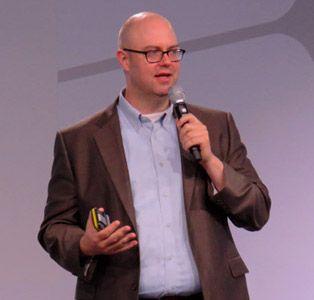

Editor’s Note: This post is part of TriplePundit’s coverage of BASF Creator Space: New York, held May 26 through May 31 in NYC. Click here for more coverage.
Speaking at the BASF CreatorSpace Summit in NYC last week, futurist Alex Steffen described a compelling vision of the role that cities will necessarily play on the path to a sustainable future.
“Sustainability and building,” Steffen said, “are the same thing.”
While it might seem intuitive to think that sustainability means building less, according to Steffen that’s not true at all. What it means, is building differently, building smarter. With population on the road to 11 billion, the capacity of cities will need to double by 2050. At the same time, we’re poised to run through our carbon budget of 1,000 gigatons (that's billions of tons), by 2034. If we overshoot, we could end up with an 8-degree increase, a scenario that no one wants to think about. "The last time carbon atmospheric levels were that high," Steffen said, “there were alligators in the Arctic.”
Switching to renewables won’t happen fast enough. We’ve got to massively reduce demand, and Steffen just might have a way to do that. It has to do with convincing people to stop driving. How do you do that? Change the world -- or, more specifically, change cities, which is where most of the people will be anyway -- so that people won’t need to drive.
Steffen breaks drivers into five groups: car-lover, car dependent, mixed modes (people who sometimes use alternatives), casual user and car-free. Car-free used to mean poor, but that is no longer the case. Many young people are not that interested in cars. In a recent survey, 30 percent of young people did not plan to buy a car. Why the lack of interest? For one thing, noted Steffen, “You can’t surf the Web while driving.”
Take a look at two cities: Barcelona and Atlanta. Though populations are similar, Atlanta extends across more than 1,650 square miles, while Barcelona's metro is only around 63 miles. As you might expect, this results in significantly less energy consumption. Carbon emissions, which are 7.5 tons per person in Atlanta, are 0.70 tons in Barcelona. That’s over a factor of 10.
Raising density helps a lot, though it doesn’t have to be by a lot. Says Steffen, “We’re not talking about Blade Runner type mega-structures.”
Throughout the talk, Steffen showed a progression of bar graphs depicting the percentage of drivers in each of the five categories of drivers. At the beginning, the bulk of ownership falls under the first categories: car-lover, car dependent, etc. He takes us through a number of scenarios, starting with today’s world, and going through what he calls “walksheds,” only to end up at high tech. Not only does this include walkability, and extensive sharing, but also making the errand a lot more efficient. He compared cities just a few years ago with the Internet before Google:“You had to spend a lot of time wandering around in order to find what you were looking for.” Today, we search online, and we either have the thing efficiently delivered to us, or we go straight there. The result of all this digital enhancement: A projected two-thirds of all drivers will become either casual users or entirely car-free. This kind of change will massively reduce carbon emissions.
It will be disruptive innovation in the way that cities are built and how they work that will usher in this kind of change. And, said Steffen, once people recognize the size of the potential market, it will happen more quickly than you might expect.
I had a few moments to chat with Alex after his talk and asked him what he would be looking into next.
“The far future,” he said.
“How far?” I asked.
“Thousands, maybe tens of thousands of years,” was his answer. “It’s entirely possible that humans could stick around that long.”
For once, I was at a loss for words. All I could think to say was, “It’s good that someone is thinking about that.”
Image credit: RP Siegel
Hong Kong Fights Litter with High-Tech Public Shaming


As our world becomes more technology-driven, businesses will increasingly look toward science and technology to spread awareness about the most pressing social and environmental issues we face.
We see a growing number of creative social-marketing campaigns aimed at changing behavior. Case in point: The Hong Kong Cleanup recently launched an innovative campaign that fights litter with high-tech public shaming.
The problem
Hong Kong, along with the rest of the world, is dealing with a serious trash issue. More than 16,000 tons of trash is thrown away every day. This includes more than 1.3 million disposable plastic bottles, 1,000 tons of plastic bags, and countless more tons of plastic wrapping and packaging. Their landfills are full. They are consuming and throwing away more than the city’s infrastructure and surrounding ecosystems can handle.
The solution
The Hong Kong Cleanup decided to take matters into its own hands. In partnership with the Nature Conservancy and Ecozine, the organization recently spearheaded an innovative awareness campaign to face the problem of littering -- literally.
Launched just in time for Earth Day in April, the Face of Litter is a citywide campaign, developed by award-winning PR partner Ogilvy. It takes an unconventional approach to the problem of littering, looking to science and technology to publicly shame the worst litter offenders.
The campaign
The Face of Litter targets key locations in Hong Kong to collect debris. Researchers analyze tossed trash and recyclables to extract DNA and create life-like digital portraits of litterers. Scientists are able to determine the eye color, skin color, hair color and even ancestry from DNA left on the smallest piece of trash.
Even more impressive -- they can asses the shape of the person’s face and create a relatively accurate portrait:
Portraits of these trash offenders are posted all over the city, from mass transit to social media and various print publications. “This campaign is one of a kind,” said Reed Collins, chief creative officer of Oglivy, “It’s interactive. It’s innovative. It’s our own science experiment that we’re using to create social change. Litter is such a major problem in Hong Kong, and thanks to technology, we can now put a face to this anonymous crime and get people to think twice about littering.”
The impact
The Face of Litter Campaign comes in the wake of a recent global study, which found that China and Indonesia are likely the top sources of ocean plastic. Together, the two countries are responsible for more than a third of the plastic bottles, bags and other trash that washes out to sea. Hong Kong Cleanup is an initiative that wants to reverse this problem in a major way. It has been working for over 15 years to combat waste.
"We are thrilled to be part of this innovative campaign, which is sure to have a positive impact on people and the community,” said Lisa Christensen, founder and CEO of Hong Kong Cleanup. “Last year, during the six-week Hong Kong Cleanup Challenge, 418 teams comprising 51,064 participants collected a total of 3,894,000 kilograms of litter from city streets, coastal areas and country trails.
"Sadly, we suffer from a serious 'pick up after me' mentality, and this simply must change,” co-founder Nissa Marion adds. "With the Hong Kong Cleanup celebrating its 15th anniversary, it’s a perfect time to take a fresh new approach to public awareness.”
Image credits: Face of Litter
Ceres and BlackRock Launch Guide on CSR Engagement
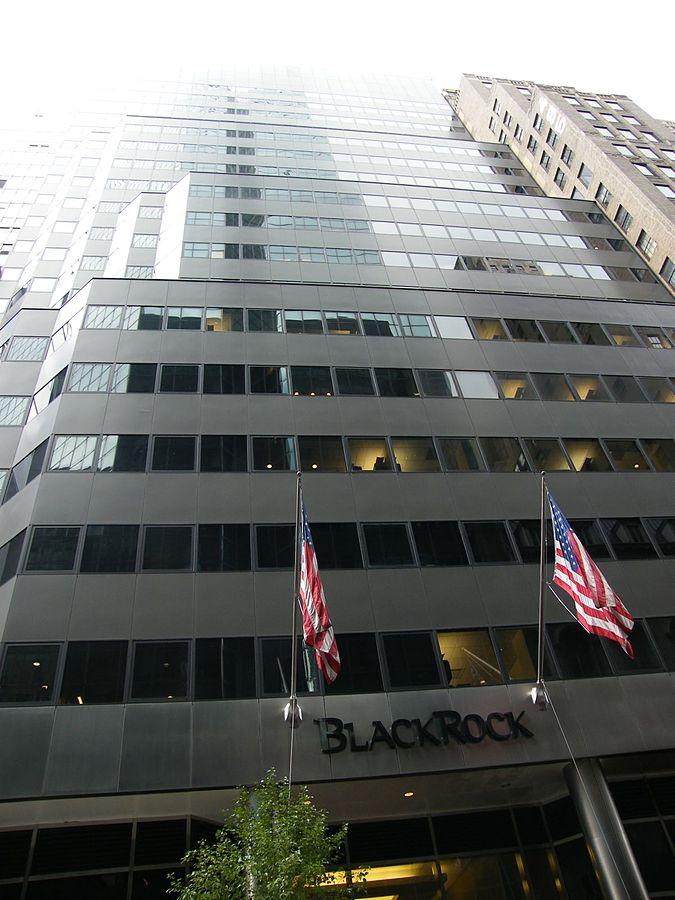

BlackRock, the world’s largest asset manager, has partnered with Ceres to issue a guide for institutional investors seeking engagement on sustainability and corporate responsibility issues with companies.
The resulting 68-page guide is certainly timely. More companies realize they have to consider the impacts that environmental and social issues have on their business, but the demands of Wall Street and the short-termism endemic in the U.S. means corporate social responsibility (or what our friends abroad designate as environment, social and governance — ESG) is still overlooked.
But times are changing. More institutional investors understand the risks within a company’s supply chain, ranging from climate change to human rights abuses, pose long-term threats to its business. And in recent years, investors have used the power of communication — backed up by the number of shares owned in a company — to get businesses to change their ways. The recent decision of Lowe’s to stop using bee-killing pesticides, and that of food conglomerates such as ADM to clean up their palm oil supply chains, are a few examples of investors’ successes in pushing companies to adopt more responsible company policies.
The question for investors, however, is the approach they should take when it is time to “speak up” to the companies in which they have purchased shares.
To that end, this report, 21st Century Engagement: Investor Strategies for Incorporating ESG Considerations into Corporate Interactions, is a primer for U.S. institutional investors ready to ramp up their engagement with companies but unsure of how to start. While we often hear the word divestment as a threat when we read financial news, the BlackRock-Ceres report argues that direct communications with companies is the preferred route instead of selling shares of companies underperforming on the sustainability front.
Such a strategy is especially true if an investor owns a large share of that company or is focused on long-term results. After all, the power of persuasion (as in an eloquently written threat with teeth) is starting to gain traction. Therefore, the report offers guidance on a variety of tactics, such as proxy votes for shareholder resolutions.
The advice this report offers is crucial considering the momentum activist shareholders have generated. Once dismissed as an occasional annoyance led by a few ragtag activists, shareholder resolutions are on an upswing, in part because the threat alone can nudge a company to change a policy. Shell’s executive leadership recently supported a shareholder resolution that requires the company to recognize climate change risk. While some activists may sniff at what they see as a token step, such a response would have been unthinkable only a few years ago.
In addition to laying out frameworks for engagement strategies, from the development of a strategic communications plan to how to follow through on a proxy vote, the guide is full of case studies as well. Finally, this report offers some suggested questions investors should ask companies based on industry — from food retail to banking and even for sectors that have been slow to accept sustainability-related risks, such as insurance companies.
In the end, this report should be required reading for all investors, including professionals working at large international financial companies, as well as individual investors who understand that environmental and social performance is important to a company’s bottom line.
Image credit: Americasroof
Breathe Easy: Keeping Indoor Air Fresh and Clean
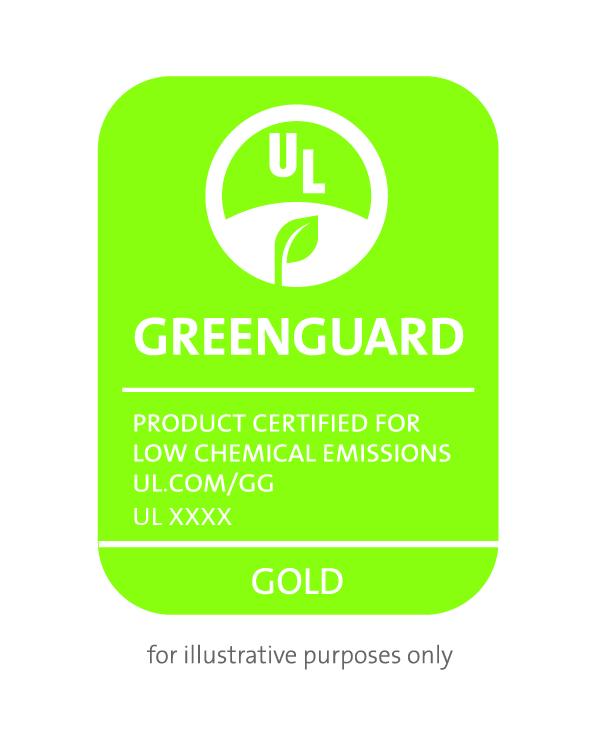

Although it seems counterintuitive to most people, indoor air quality is commonly two to five times more contaminated than outdoor air. Meanwhile, the average American spends 90 percent of their time indoors. Although we typically think of cars, factories and power plants contaminating outdoor air, there are also numerous sources of indoor contaminants that are less obvious.
As building envelopes get tighter, less air infiltration increases the concentrations of these pollutants, creating human health concerns. The primary approaches to protecting indoor air quality include diluting toxins through ventilation and reducing or eliminating the sources of indoor pollutants.
"Two factors work together to impact indoor air quality. Ventilation affects how much fresh air you are bringing into the home, and source-control affects which materials are releasing chemicals into the space," says Scott Steady, product manager for indoor air quality at UL Environment. "As we tighten up our homes and have a tighter envelope, that decreases the dilution for the emissions coming from sources inside the home."
Ventilation to dilute toxins
As new homes are remodeled or constructed to have tighter building envelopes, ventilation strategies are increasingly important. In addition to volatile organic compounds (VOCs), indoor air quality can suffer from excessive levels of pollen, dust and particles from combustion. Exhaust-only ventilation systems can be efficient in removing many toxins from the home, but they do not recover the heat from exhaust air and exhaust precious cool air out in the summer. They create a negative pressure in the home, forcing make-up air to infiltrate through leaks in the building envelope. Balanced ventilation systems by contrast often supply filtered air, further promoting indoor air quality.
“The rooms with exhaust fans get really good ventilation, but the back bedroom may not feel the effects of that,” explains says Sarah Widder, energy engineer for the Pacific Northwest National Laboratory. “In general, we know that balanced ventilation systems work better in terms of delivering fresh air equally to all rooms of the house.”
Heat recovery ventilation systems are balanced systems that both remove stale air and supply a constant stream of fresh, filtered air into the living areas (i.e., bedrooms and living room), to insure optimal air circulation throughout the house. By controlling the location of the fresh air intake, balanced ventilation systems eliminate radon in make-up air and moisture intake from the walls, windows or crawl space that can be problematic with exhaust-only ventilation systems.
Pollen, dust and even particles can be removed, especially when a high-MERV filter is used. In heat recovery ventilation systems, a heat exchanger captures heat from the outgoing air during the heating season. Zehnder heat recovery ventilation systems are up to 95 percent efficient in transferring this heat to the incoming air, keeping energy bills down. They also boost cooling in the summer months by increasing ventilation rates and transferring coolness to intake air.
Low-emission materials
Numerous products emit VOC gases at room temperature, which are known to cause human health effects. These VOCs are released from a vast array of products, including paints, furniture, cleaning products, air fresheners, personal care items, building finishes, engineered wood products and adhesives. Indoor levels of VOCs can be 10 times higher than outdoor levels, making them a high priority in boosting indoor air quality.
The EPA has not determined threshold limits for indoor VOC emissions, but third-party programs exist that are intended to mitigate exposure to specific VOCs that are believed or known to impact human health. These organizations identify low-emission materials to promote indoor air quality, largely doing the homework for selecting products that enhance indoor air quality.
GREENGUARD-certified products satisfy stringent third-party standards for safer indoor environments. This program, administered by UL Environment, screens for more than 10,000 chemicals, including formaldehyde and certain VOC levels. There are currently more than 26,000 certified products available in 28 categories, making safer material selection easier.
Image credit: Aditi Rao, Flickr (upper image)